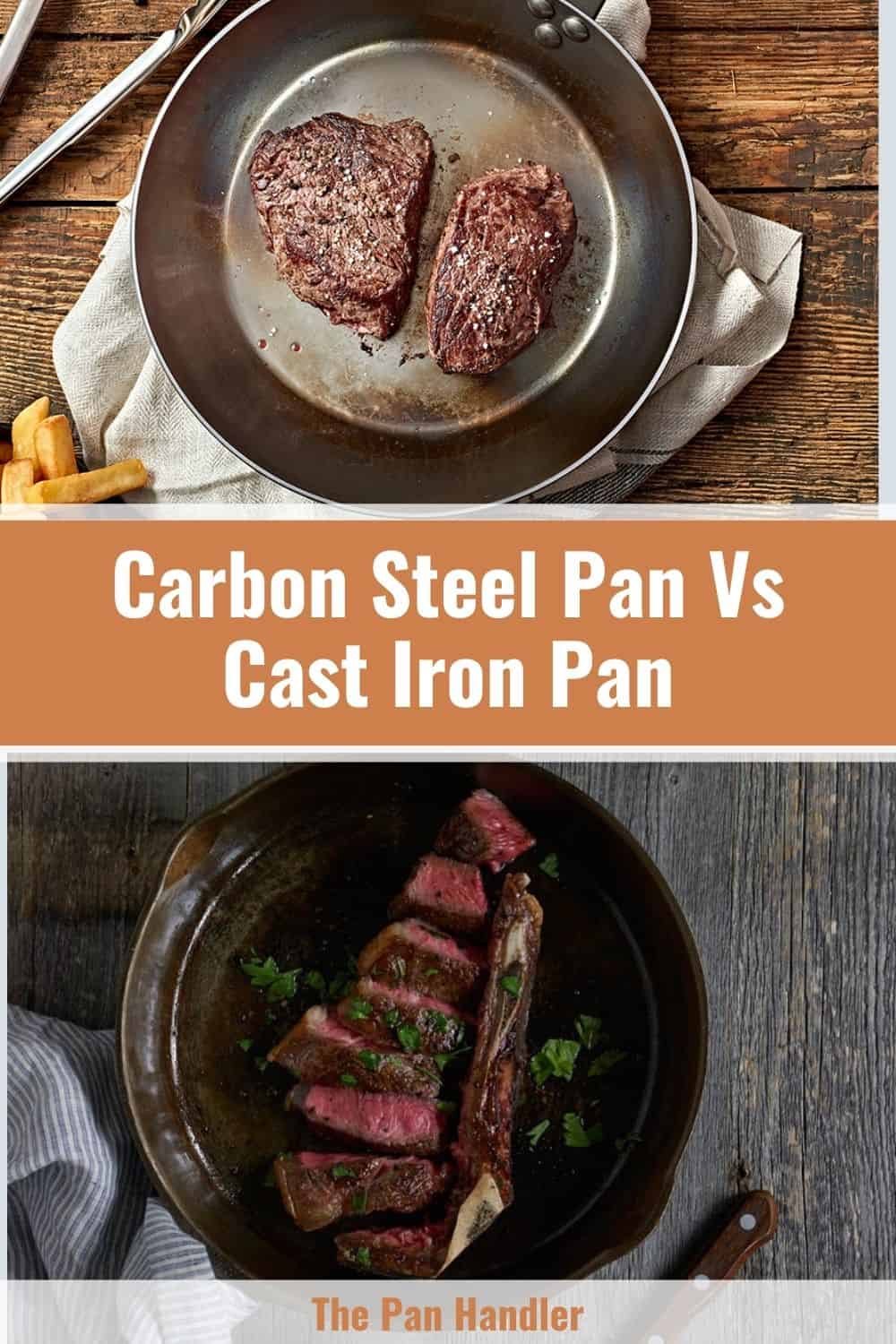Both carbon steel and cast iron pans are long-lasting, versatile, and non-stick, and these qualities make them essential in your cookware collection. They are made from similar materials and, as such, share some attributes, but they do have distinct differences. However, despite their similarities, they have some differences.
What are the strengths and weaknesses of carbon steel pans?
The carbon steel pan is made using an alloy of iron and carbon, typically ranging from 0.1% to 2.1% of carbon. Due to the low carbon content in a carbon steel pan, it is more bendable and durable. It can be beaten into any shape, and it won’t break.
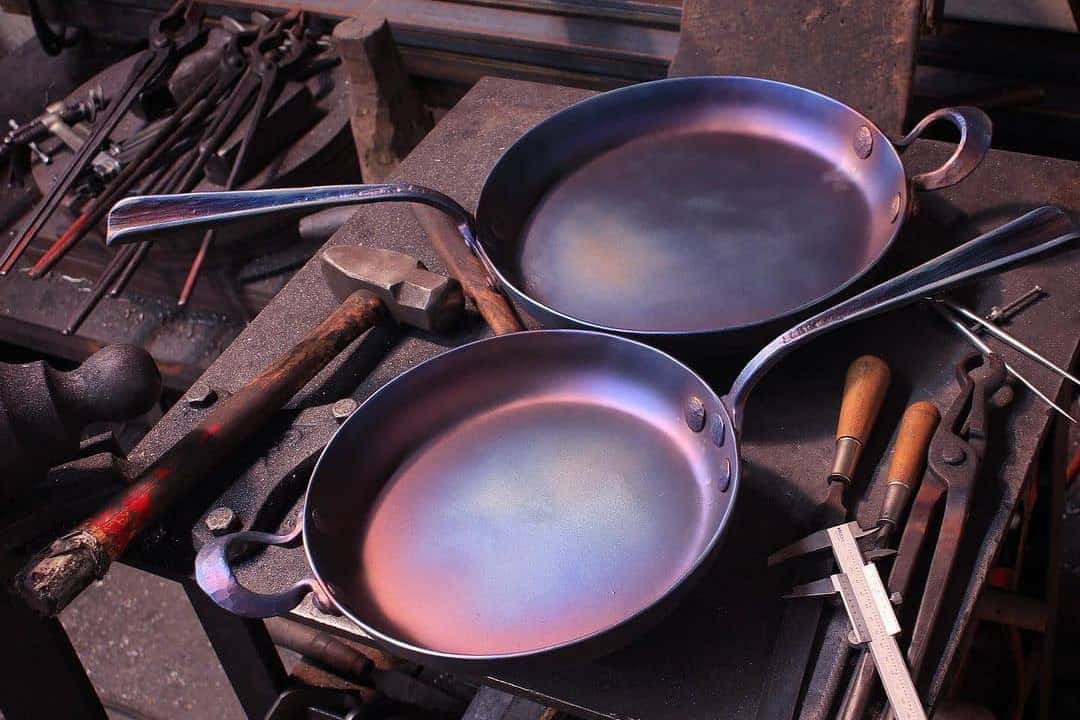
Strengths
The carbon steel pan is lightweight, which makes it easier to use in the kitchen. You can easily take it out of your cupboard and transfer it from one place to another without exerting much energy. However, its lightweight and delicate nature don’t affect its strength.
It is also very versatile. You can use it for cooking, from scrambling eggs to stir-frying roasted chicken. No matter the cooking method, a carbon steel pan is safe anywhere. It tolerates high heat and doesn’t stick to your food.
Weaknesses
However, the carbon steel pan rusts quickly because its layer isn’t resistant to corrosion. You have to season it regularly if you don’t want it to get discolored. Besides, the handles get piping hot as they are connected to the pan’s base. As such, you have to be careful so as not to get burnt.
What are the strengths and weaknesses of cast iron pans?
On the other hand, a cast iron pan contains more carbon than a carbon steel pan. It is made with about 2 to 4 percent of carbon and the rest being iron. It gets better as it ages.
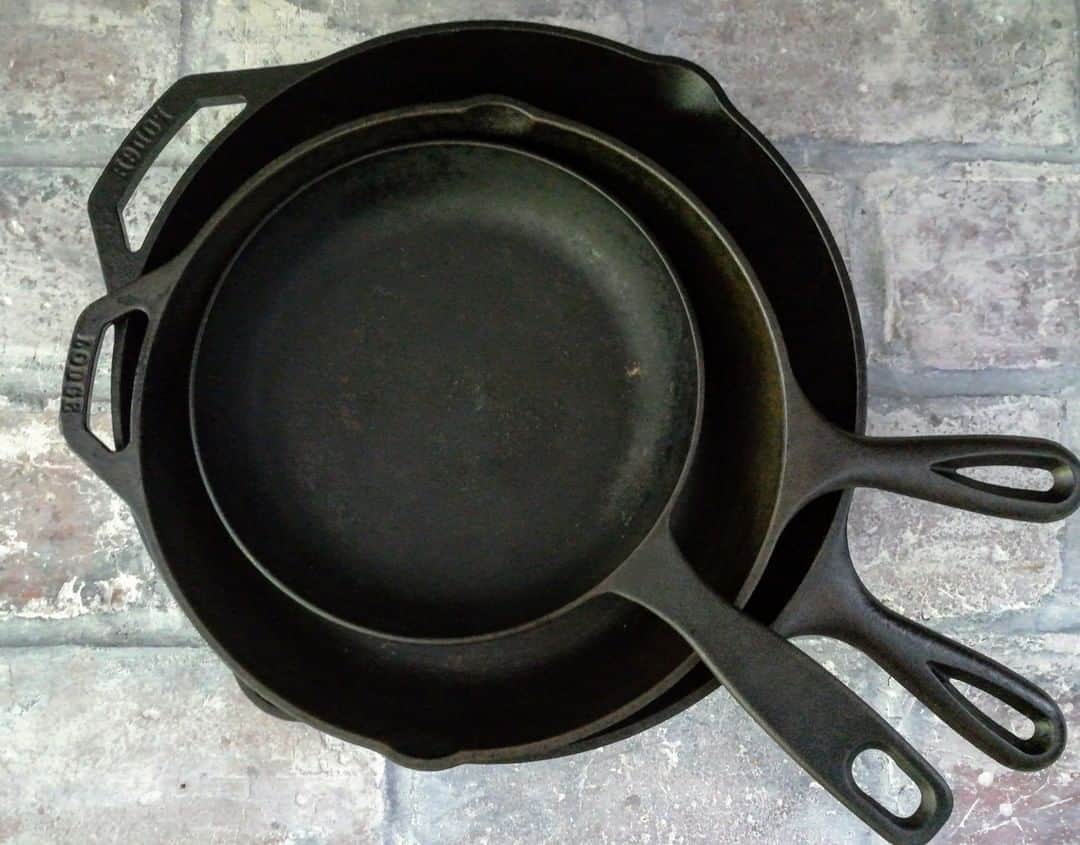
Strengths
The cast iron pan is long-lasting as you can use it for decades. It is good at retaining heat and doesn’t stick to your food. It stays hot for some time, even after you’ve brought it down from the stovetop or out of the oven. In most cases, it is super affordable.
Weaknesses
However, a cast iron pan heats evenly but slowly. To heat your food evenly, the top of your burner mustn’t be smaller than the base of the pan. Besides, it is heavy and difficult to maneuver.
You can’t quickly transfer it from one place to another because of its weight and size. Like carbon steel pans, it is prone to rust, especially when you use it for cooking dishes with acidic ingredients like lemon regularly.
What are the similarities between a carbon steel pan and a cast iron pan?
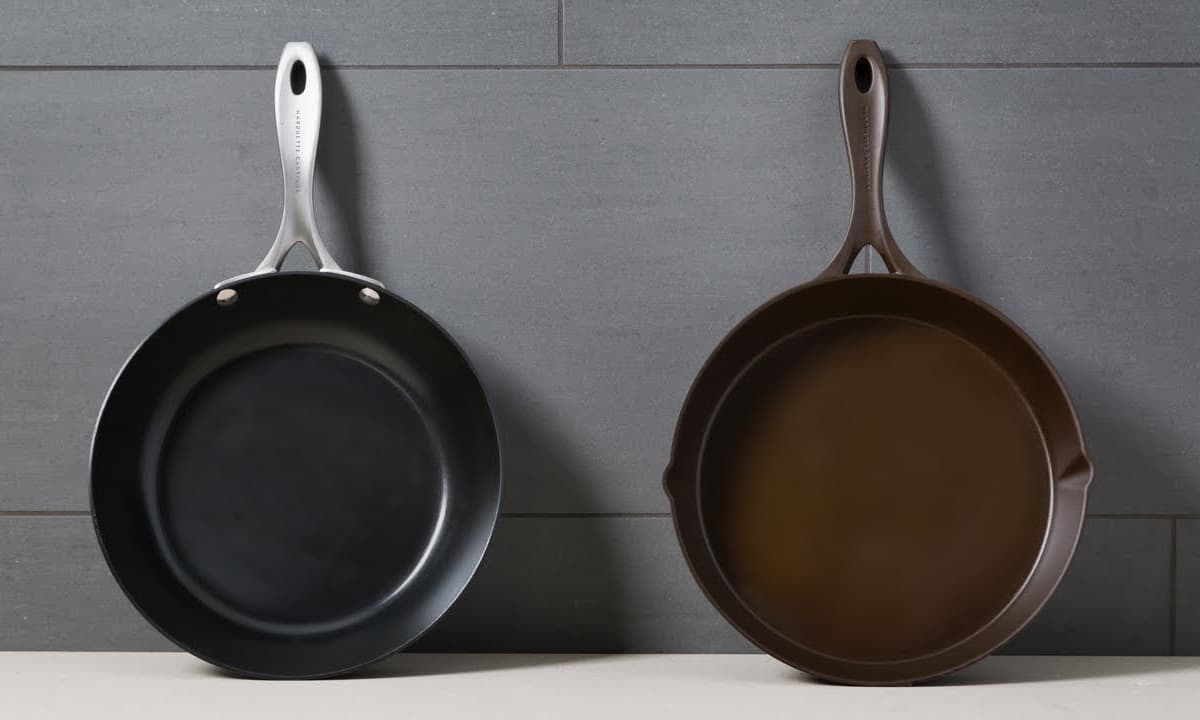
Versatile
Both pans are versatile. You can use them on the grill, on a kitchen stovetop, over an open fire, or in an oven. You can safely transition any of the pans from one medium to the other. For instance, you can take your carbon steel pan or cast iron pan from the oven to the kitchen stovetop. They cook your food perfectly, either it is something as simple as stir-frying vegetables or cooking a soup.
Compatible with induction cooking
Furthermore, both pans contain ferromagnetic metals. Ferromagnetic metals make it possible for cookware to work well on an induction stovetop. Induction cooking isn’t the same as conventional cooking.
It consumes less energy, heats your food more quickly, and ensures the cooking surface is cool no matter the intensity of the heat. While it is used in most hotels and when there’s a large amount of food to cook, it isn’t limited to those functions alone. You can also upgrade your kitchen appliances to accommodate induction cooking, and both pans won’t go obsolete.
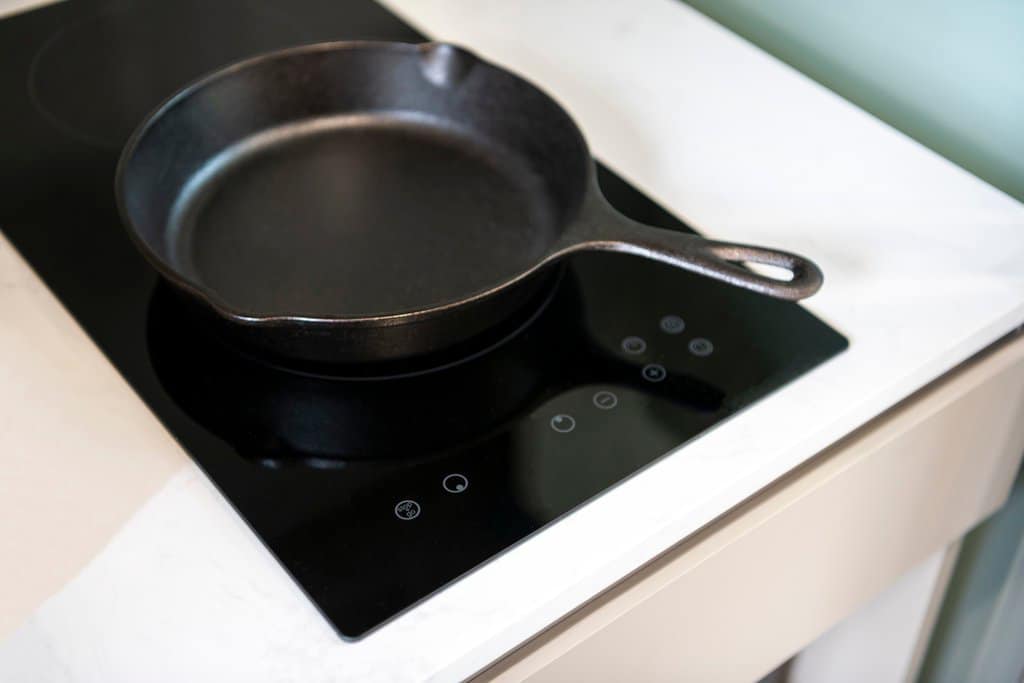
React to acidic foods
In addition, both pans react to acidic foods. Acidic foods corrupt their seasoning and slick surfaces, which make them lose their color, stick to your food and make your food taste metallic. For them to maintain their non-sticky nature, you need to season them regularly.
You do this by treating their cooking surfaces with hot fat or oil. It’s best to avoid cooking acidic foods like tomato sauces until they have a good level of seasoning. Ensure you don’t wash away the seasoning when cleaning your pans too.
Not dishwasher-safe
Finally, both pans aren’t dishwasher-safe. They aren’t kitchen utensils you can dump in the dishwasher because they can quickly lose their seasoning and become sticky if you do so. They don’t do well with harsh ingredients either.
Ensure you always use a mild soap when cleaning them. Besides, food ingredients quickly come loose from their surfaces, so it isn’t difficult to clean them. If you do need to scour, use a scouring pad with hot water.
What are the differences between a carbon steel pan and a cast iron pan?
Even though the differences between a carbon steel pan and a cast iron pan are subtle, you’ll easily spot the differences when you use them for cooking.
Strength
A cast iron pan is more brittle than a carbon steel pan. The chances of it breaking or warping when it falls to the ground are high. It is less malleable compared to carbon steel. However, a carbon steel pan is more ductile and less brittle, making it easier to manipulate. It is unlikely to break or warp if it falls onto a hard surface.
Weight
More so, a cast iron pan is heavier than a carbon steel pan. Its body is thicker and denser, unlike a carbon steel pan whose body is thinner and lighter. For instance, you can transport a carbon steel pan from one place to the other using one hand, but you’re unlikely to do that if you’re carrying a cast iron pan. You have to use both hands.
Texture
Their construction is different too. A cast-iron pan is formed in a cast; that is, liquid metal is poured into an already-made mold. This makes it have an uneven surface with big pores; that’s why you find the holes in your cast iron pan uneven in size.
However, a carbon steel pan is constructed differently. Multiple metal sheets are heated and pressed together manually or by a machine to form smooth, curved sides and even surfaces.
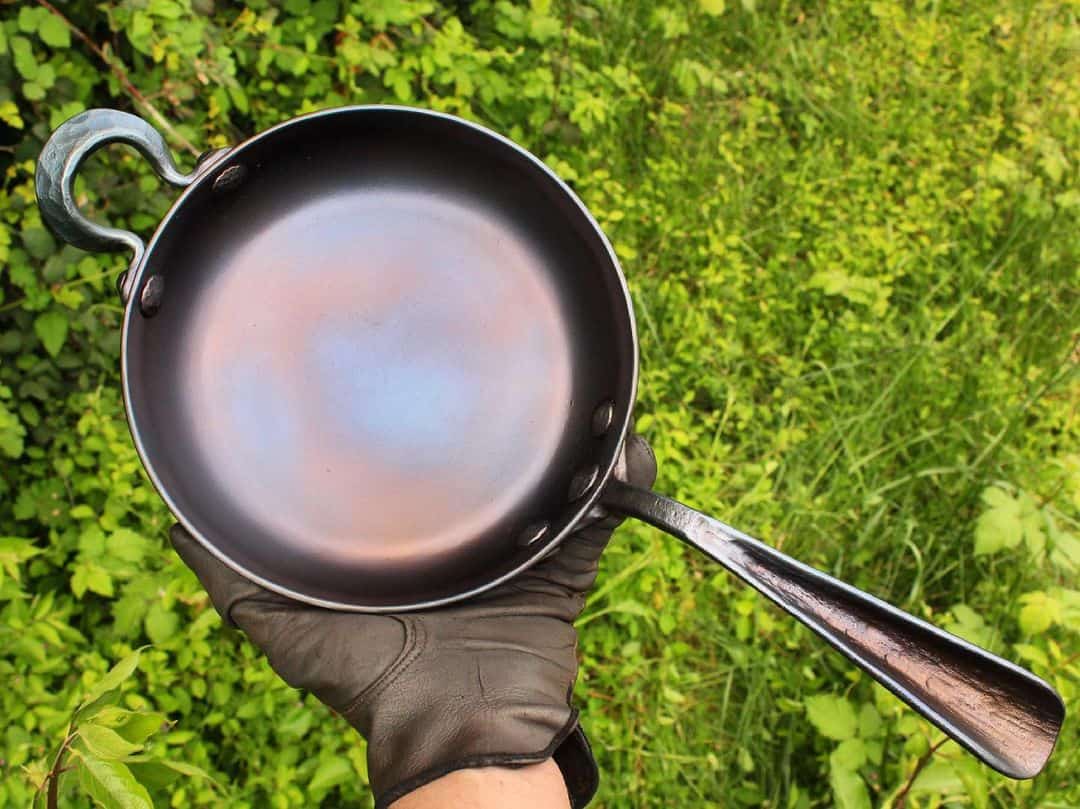
Heat retention
As regards heat retention, a cast iron pan is slow to get heated but remains consistently hot when it gets heated, while a carbon steel pan heats up quickly but doesn’t get as hot as a cast iron pan and cools down faster.
Due to their different heat handling characteristics, a cast iron pan retains heat for longer, making it suitable for slow cooking or searing foods like steak. Conversely, a carbon steel pan heats and cools quickly, providing more control for precise cooking techniques such as sautéing vegetables.
However, both types of pans can be used for a variety of cooking methods depending on personal preferences and specific needs. Ensure you know which foods are appropriate to be cooked in each pan to retain their nutritional value.
Tips for maintaining both carbon steel and cast iron pans
To keep both pans in top shape, you have to maintain them. Failure to do so will cut back on the years the pans can be used.
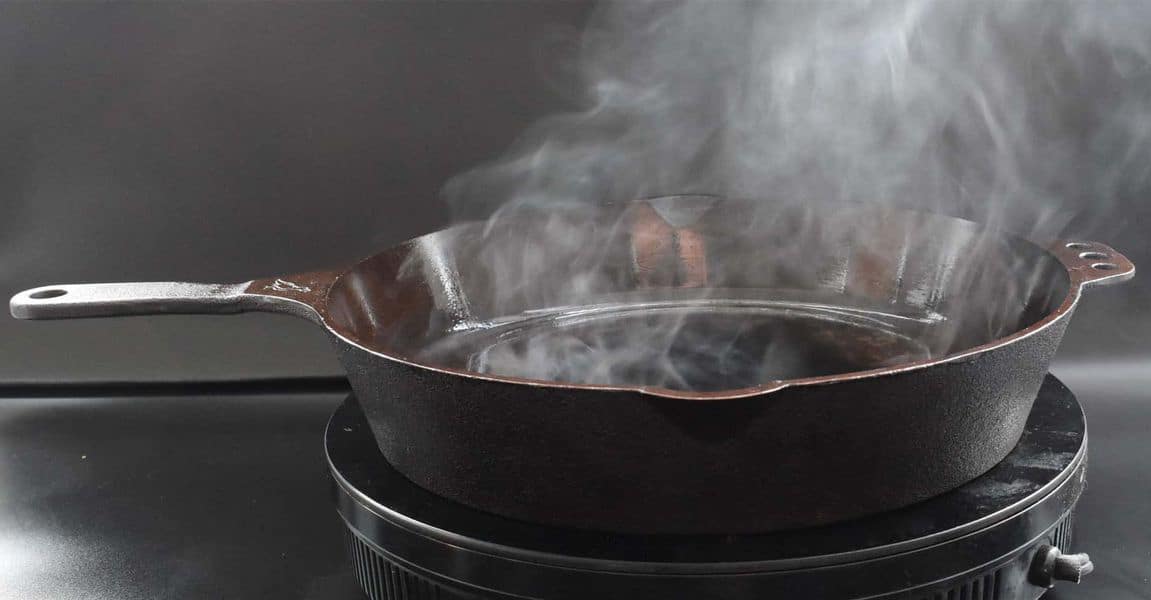
Clean and season the pans regularly
When cleaning both pans, start with the gentlest methods. Use a cleaning brush to remove all food residues from the cooking surfaces. If you want to season the pans, after cleaning, heat the pans on the stovetop until they are dry or dry with a paper towel.
Spray some seasoning oil onto the pans’ surfaces and rub until evenly distributed. If you don’t have seasoning oil, you can use other high smoke point oils such as flaxseed oil or canola oil. Saturated fats like lard can also be used.
The oil prevents the pans from rusting and becoming sticky. Don’t forget to wipe off the excess oil using a lint-free cloth. Your pans should have a dry, shiny finish but shouldn’t be under-oiled.
Don’t soak them in water
Equally, you shouldn’t soak both pans in water. Doing so will make them rust quickly. However, you can rinse them with water. Ensure there is no lingering moisture on the cooking surfaces after you’ve rinsed the pans. Use a dish towel to dry them thoroughly.
Use mild soaps when cleaning
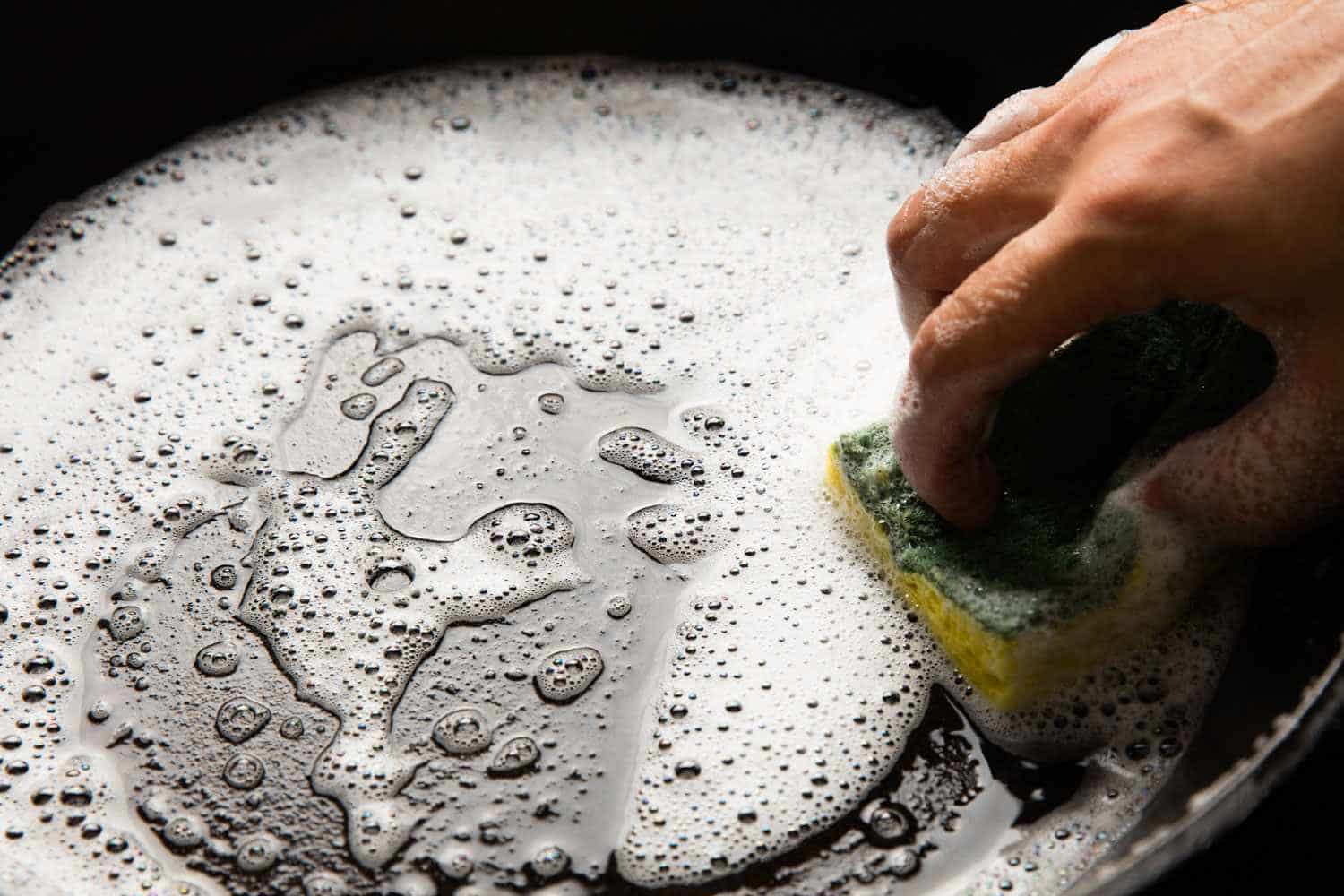
Only use soaps that don’t contain harsh compounds to clean your pans. For instance, lye isn’t a good option for cleaning both pans. Buy soaps made with eco-friendly materials instead.
Check the label to be sure the soaps have no polishing agents. Good soaps not only keep your pans safe but also remove intense food flavors and make them smell nice. Since soaps get rid of grease, only oil the pans after you’ve cleaned them.
Store the pans in cool places
Equally important is where you store both pans. Cool and dry spaces are ideal for both pans. Warm and humid places catalyze the rusting process. Also, ensure that you don’t stack pieces of pans on top of one another.
Doing this makes the seasoning less effective. The best place to store them is on your stovetops. Use both pans regularly to keep them in top shape. If you won’t be using them for some time, season them thoroughly before you keep them away.
Summary
Carbon steel pans are better choices than cast iron pans, but ultimately, what you choose depends on the nature of the food you want to cook and your preference. However, both are essential cookware in your kitchen. If you want both pans to last long, ensure you practice the maintenance tips above.
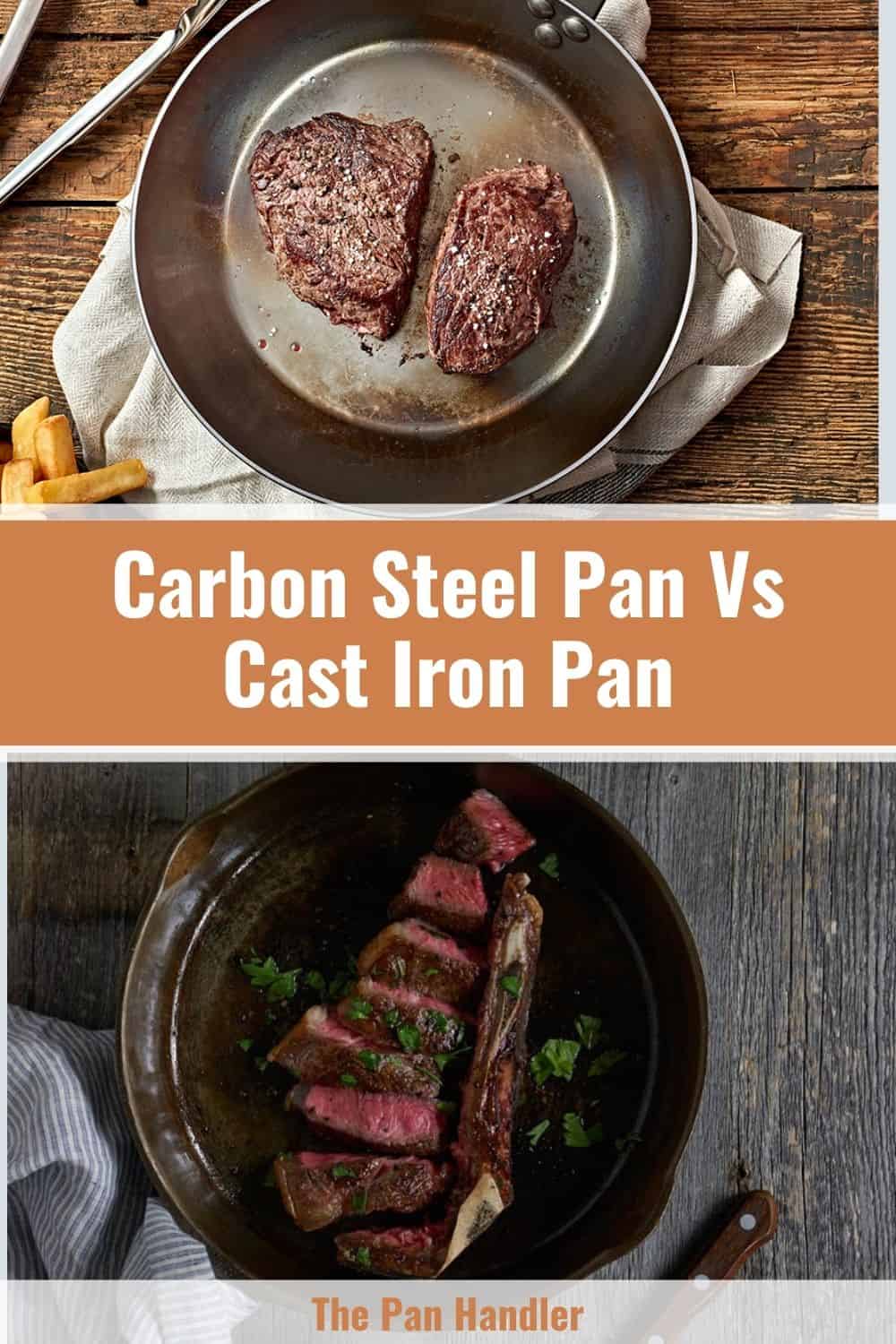

Michael Johnson is the founder of Pan Mastery, Inspired by his blacksmith grandfather’s legacy has a deep appreciation for hand-crafted pots and pans, he provides invaluable guides, reviews, and recipes to enhance your culinary journey.

